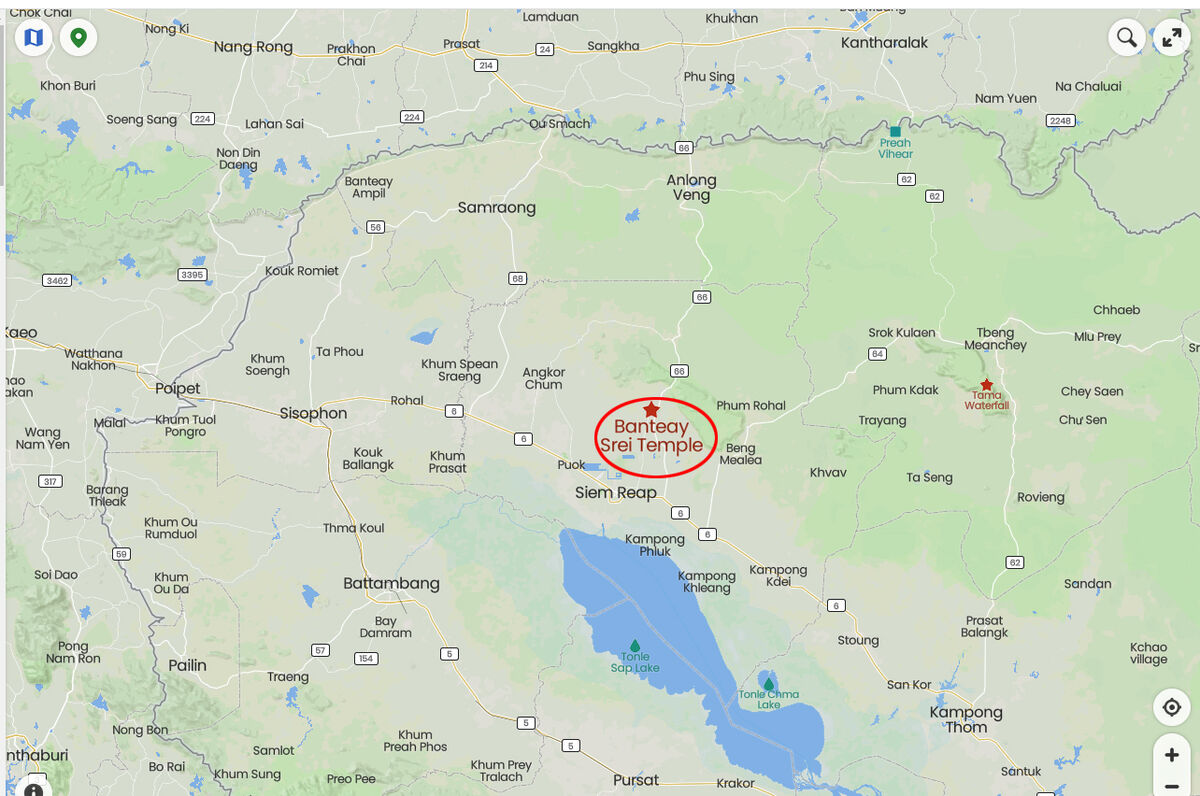Cambodia: Siem Reap Part 5 - The Banteay Srei Temple
Dec 30, 2022 14:55:08 #
We left the village by motorcoach for the short drive to the Banteay Srei Temple. Parenthetically, this is located in an area of northwestern Cambodia not far from Poipet, the scene of the tragic hotel/casino fire which occurred yesterday. The beautiful Temple will be the subject of my next few posts.
Banteay Srei or Banteay Srey (Khmer: បន្ទាយស្រី [ɓɑntiəj srəj]) is a 10th-century Cambodian temple dedicated to the Hindu god Shiva. Located in the area of Angkor, it lies near the hill of Phnom Dei, 25 km (16 mi) north-east of the main group of temples that once belonged to the medieval capitals of Yasodharapura and Angkor Thom. Banteay Srei is built largely of red sandstone, a medium that lends itself to the elaborate decorative wall carvings which are still observable today. The buildings themselves are miniature in scale, unusually so when measured by the standards of Angkorian construction. These factors have made the temple extremely popular with tourists, and have led to its being widely praised as a "precious gem", or the "jewel of Khmer art."
Consecrated on 22 April 967 A.D., Bantãy Srĕi was the only major temple at Angkor not built by a monarch; its construction is credited to the courtiers named Vishnukumara and Yajnavaraha: 367 / Yajñavarāha (modern Khmer: យជ្ញវរាហៈ), who served as a counsellor to king Rajendravarman II (modern Khmer: ព្រះបាទរាជេន្រ្ទវរ្ម័ន). The foundational stela says that Yajnavaraha, grandson of king Harsavarman I, was a scholar and philanthropist who helped those who suffered from illness, injustice, or poverty. His pupil was the future king Jayavarman V (r. 968- ca. 1001). Originally, the temple was surrounded by a town called Īśvarapura.
Banteay Srei is known for the intricacy of its carvings.
Yajñavarāha's temple was primarily dedicated to the Hindu god Śiva. Originally, it carried the name Tribhuvanamaheśvara—great lord of the threefold world—in reference to the Shaivite linga that served as its central religious image. However, the temple buildings appear to be divided along the central east–west axis between those buildings located south of the axis, which are devoted to Śiva, and those north of the axis, which are devoted to Viṣṇu.
It has been speculated that the temple's modern name, Bantãy Srĕi, is due to the many devatas carved into the red sandstone walls.
The temple's modern name, Bantãy Srĕi—citadel of the women, or citadel of beauty—is probably related to the intricacy of the bas relief carvings found on the walls and the tiny dimensions of the buildings themselves. Some have speculated that it relates to the many devatas carved into the walls of the buildings.
Bantãy Srĕi was subject to further expansion and rebuilding work in the eleventh century. At some point it came under the control of the king and had its original dedication changed; the inscription K 194 from Phnoṃ Sandak, dated Monday, the 14th or 28 July 1119 A.D. records (line B 13) the temple being given to the priest Divākarapaṇḍita and being rededicated to Śiva. It remained in use at least until the fourteenth century according to the last known inscription K 569, dated Thursday, 8 August 1303 A.D.
The temple was rediscovered in 1914 and was the subject of a celebrated case of art theft when André Malraux stole four devatas in 1923. (He was soon arrested, and the figures were returned.) The incident stimulated interest in the site, which was cleared the following year.
In the 1930s Banteay Srei was restored through the first important use of anastylosis at Angkor whereby a ruined building or monument is restored using the original architectural elements to the greatest degree possible. Until the discovery of the foundation stela in 1936, it had been assumed that the extreme decoration indicated a later date than was the case.
To prevent the site from water damage, the joint Cambodian-Swiss Banteay Srei Conservation Project installed a drainage system between 2000 and 2003. Measures were also taken to prevent damage to the temples walls from nearby trees.
Unfortunately, the temple has been ravaged by pilfering and vandalism. When, toward the end of the 20th century, authorities removed some original statues and replaced them with concrete replicas, looters took to attacking the replicas. A statue of Shiva and his shakti Uma, removed to the National Museum in Phnom Penh for safekeeping, was assaulted in the museum itself.
Banteay Srei is built largely of a hard red sandstone that can be carved like wood. Brick and laterite were used only for the enclosure walls and some structural elements. The temple is known for the beauty of its sandstone lintels and pediments.
The sanctuary is entered from the east by a doorway only 1.08 m in height: inside is an entrance chamber (or maṇḍapa) with a corbelled brick roof, then a short corridor leading to three towers to the west: the central tower is the tallest, at 9.8 m. Glaize notes the impression of delicacy given the towers by the antefixes on each of their tiers. The six stairways leading up to the platform were each guarded by two kneeling statues of human figures with animal heads; most of those now in place are replicas, the originals having been stolen or removed to museums.
https://en.wikipedia.org/wiki/Banteay_Srei
For more images of Siem Reap and narratives, please see my previous posts:
https://www.uglyhedgehog.com/t-760858-1.html#13633063
https://www.uglyhedgehog.com/t-761100-1.html#13638505
https://www.uglyhedgehog.com/t-761169-1.html
https://www.uglyhedgehog.com/t-761242-1.html
I hope you enjoy these!
Mark
Banteay Srei or Banteay Srey (Khmer: បន្ទាយស្រី [ɓɑntiəj srəj]) is a 10th-century Cambodian temple dedicated to the Hindu god Shiva. Located in the area of Angkor, it lies near the hill of Phnom Dei, 25 km (16 mi) north-east of the main group of temples that once belonged to the medieval capitals of Yasodharapura and Angkor Thom. Banteay Srei is built largely of red sandstone, a medium that lends itself to the elaborate decorative wall carvings which are still observable today. The buildings themselves are miniature in scale, unusually so when measured by the standards of Angkorian construction. These factors have made the temple extremely popular with tourists, and have led to its being widely praised as a "precious gem", or the "jewel of Khmer art."
Consecrated on 22 April 967 A.D., Bantãy Srĕi was the only major temple at Angkor not built by a monarch; its construction is credited to the courtiers named Vishnukumara and Yajnavaraha: 367 / Yajñavarāha (modern Khmer: យជ្ញវរាហៈ), who served as a counsellor to king Rajendravarman II (modern Khmer: ព្រះបាទរាជេន្រ្ទវរ្ម័ន). The foundational stela says that Yajnavaraha, grandson of king Harsavarman I, was a scholar and philanthropist who helped those who suffered from illness, injustice, or poverty. His pupil was the future king Jayavarman V (r. 968- ca. 1001). Originally, the temple was surrounded by a town called Īśvarapura.
Banteay Srei is known for the intricacy of its carvings.
Yajñavarāha's temple was primarily dedicated to the Hindu god Śiva. Originally, it carried the name Tribhuvanamaheśvara—great lord of the threefold world—in reference to the Shaivite linga that served as its central religious image. However, the temple buildings appear to be divided along the central east–west axis between those buildings located south of the axis, which are devoted to Śiva, and those north of the axis, which are devoted to Viṣṇu.
It has been speculated that the temple's modern name, Bantãy Srĕi, is due to the many devatas carved into the red sandstone walls.
The temple's modern name, Bantãy Srĕi—citadel of the women, or citadel of beauty—is probably related to the intricacy of the bas relief carvings found on the walls and the tiny dimensions of the buildings themselves. Some have speculated that it relates to the many devatas carved into the walls of the buildings.
Bantãy Srĕi was subject to further expansion and rebuilding work in the eleventh century. At some point it came under the control of the king and had its original dedication changed; the inscription K 194 from Phnoṃ Sandak, dated Monday, the 14th or 28 July 1119 A.D. records (line B 13) the temple being given to the priest Divākarapaṇḍita and being rededicated to Śiva. It remained in use at least until the fourteenth century according to the last known inscription K 569, dated Thursday, 8 August 1303 A.D.
The temple was rediscovered in 1914 and was the subject of a celebrated case of art theft when André Malraux stole four devatas in 1923. (He was soon arrested, and the figures were returned.) The incident stimulated interest in the site, which was cleared the following year.
In the 1930s Banteay Srei was restored through the first important use of anastylosis at Angkor whereby a ruined building or monument is restored using the original architectural elements to the greatest degree possible. Until the discovery of the foundation stela in 1936, it had been assumed that the extreme decoration indicated a later date than was the case.
To prevent the site from water damage, the joint Cambodian-Swiss Banteay Srei Conservation Project installed a drainage system between 2000 and 2003. Measures were also taken to prevent damage to the temples walls from nearby trees.
Unfortunately, the temple has been ravaged by pilfering and vandalism. When, toward the end of the 20th century, authorities removed some original statues and replaced them with concrete replicas, looters took to attacking the replicas. A statue of Shiva and his shakti Uma, removed to the National Museum in Phnom Penh for safekeeping, was assaulted in the museum itself.
Banteay Srei is built largely of a hard red sandstone that can be carved like wood. Brick and laterite were used only for the enclosure walls and some structural elements. The temple is known for the beauty of its sandstone lintels and pediments.
The sanctuary is entered from the east by a doorway only 1.08 m in height: inside is an entrance chamber (or maṇḍapa) with a corbelled brick roof, then a short corridor leading to three towers to the west: the central tower is the tallest, at 9.8 m. Glaize notes the impression of delicacy given the towers by the antefixes on each of their tiers. The six stairways leading up to the platform were each guarded by two kneeling statues of human figures with animal heads; most of those now in place are replicas, the originals having been stolen or removed to museums.
https://en.wikipedia.org/wiki/Banteay_Srei
For more images of Siem Reap and narratives, please see my previous posts:
https://www.uglyhedgehog.com/t-760858-1.html#13633063
https://www.uglyhedgehog.com/t-761100-1.html#13638505
https://www.uglyhedgehog.com/t-761169-1.html
https://www.uglyhedgehog.com/t-761242-1.html
I hope you enjoy these!
Mark
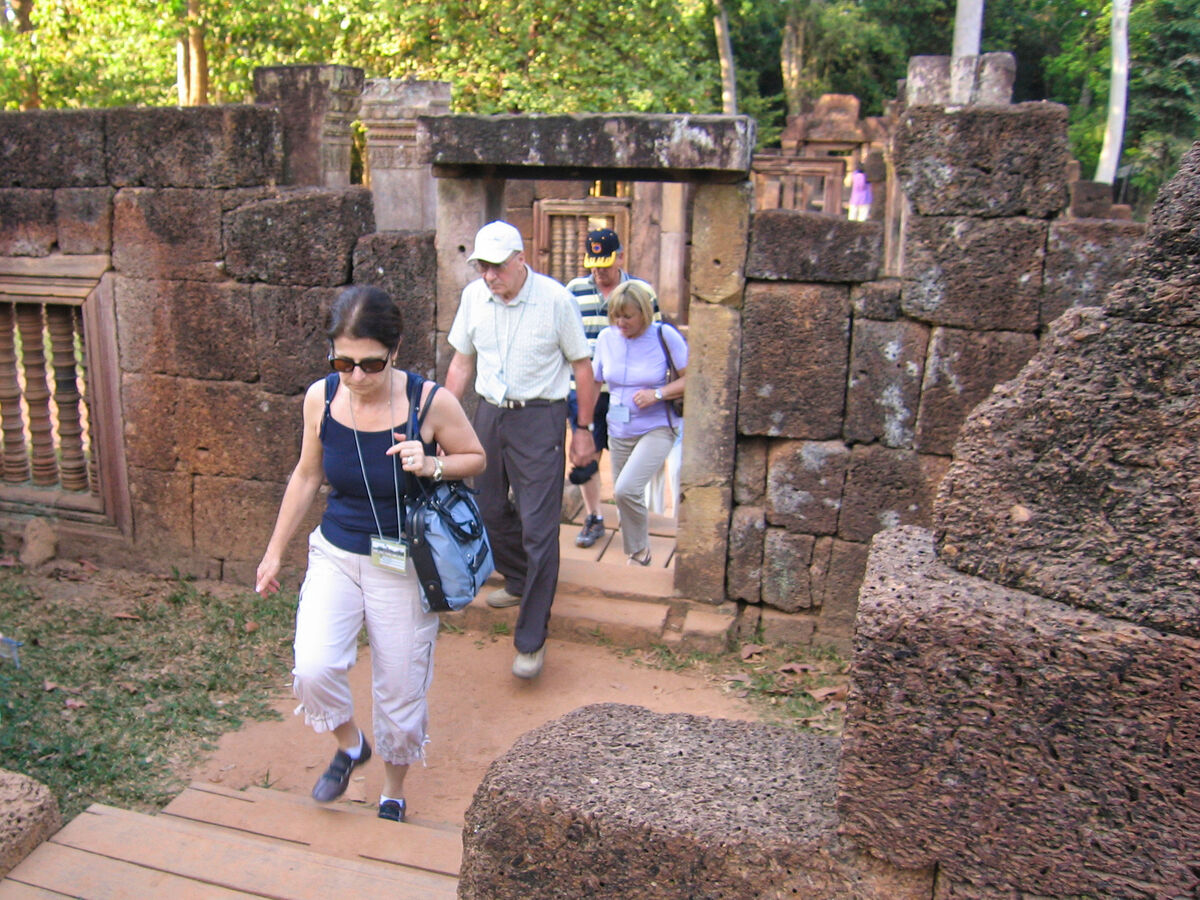
(Download)
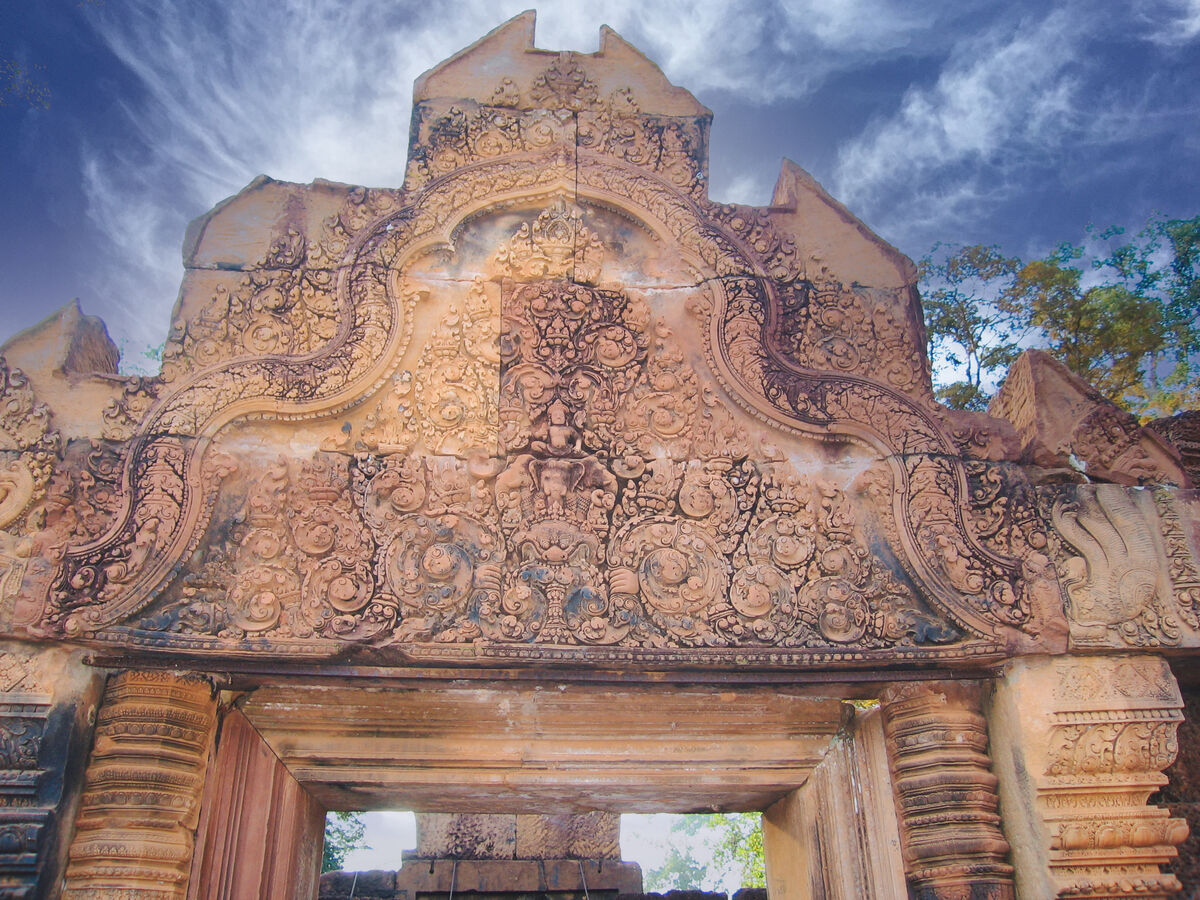
(Download)
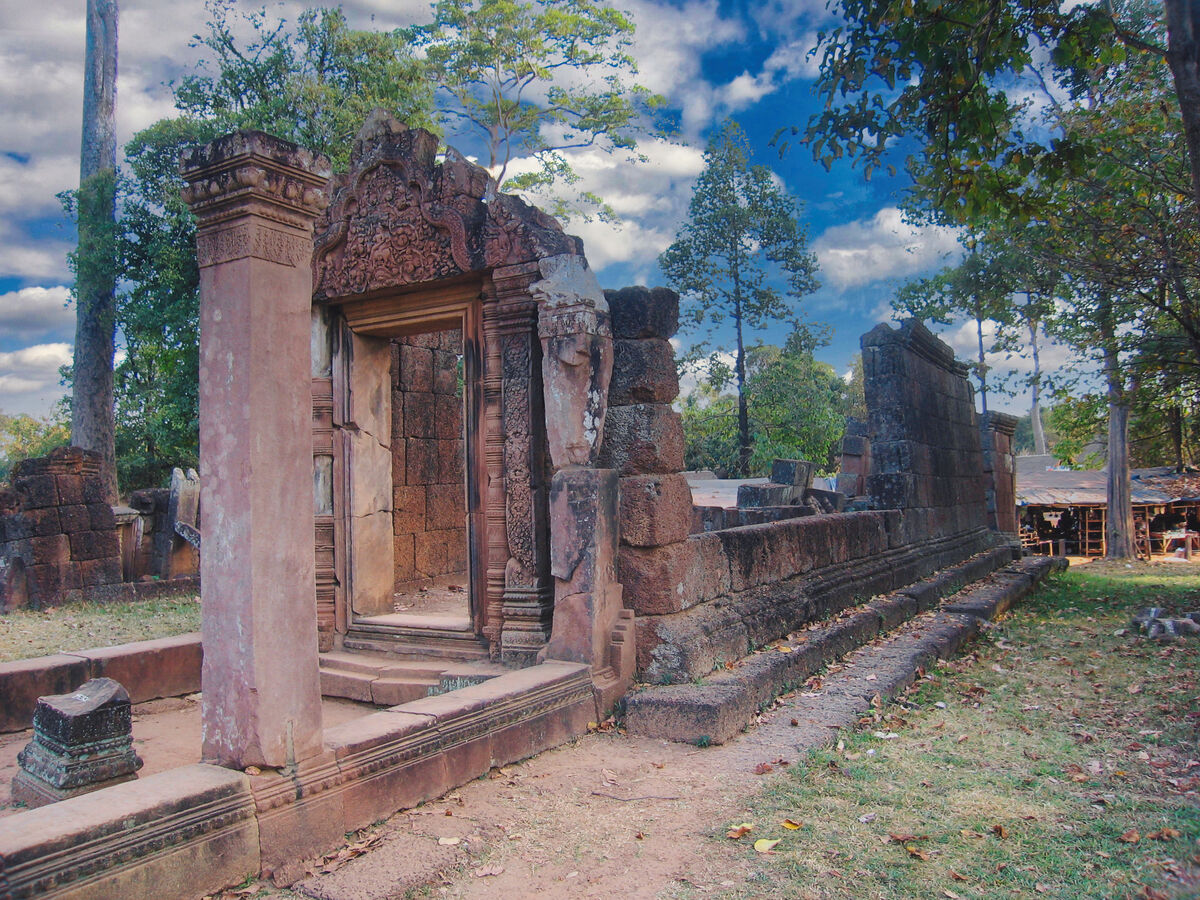
(Download)
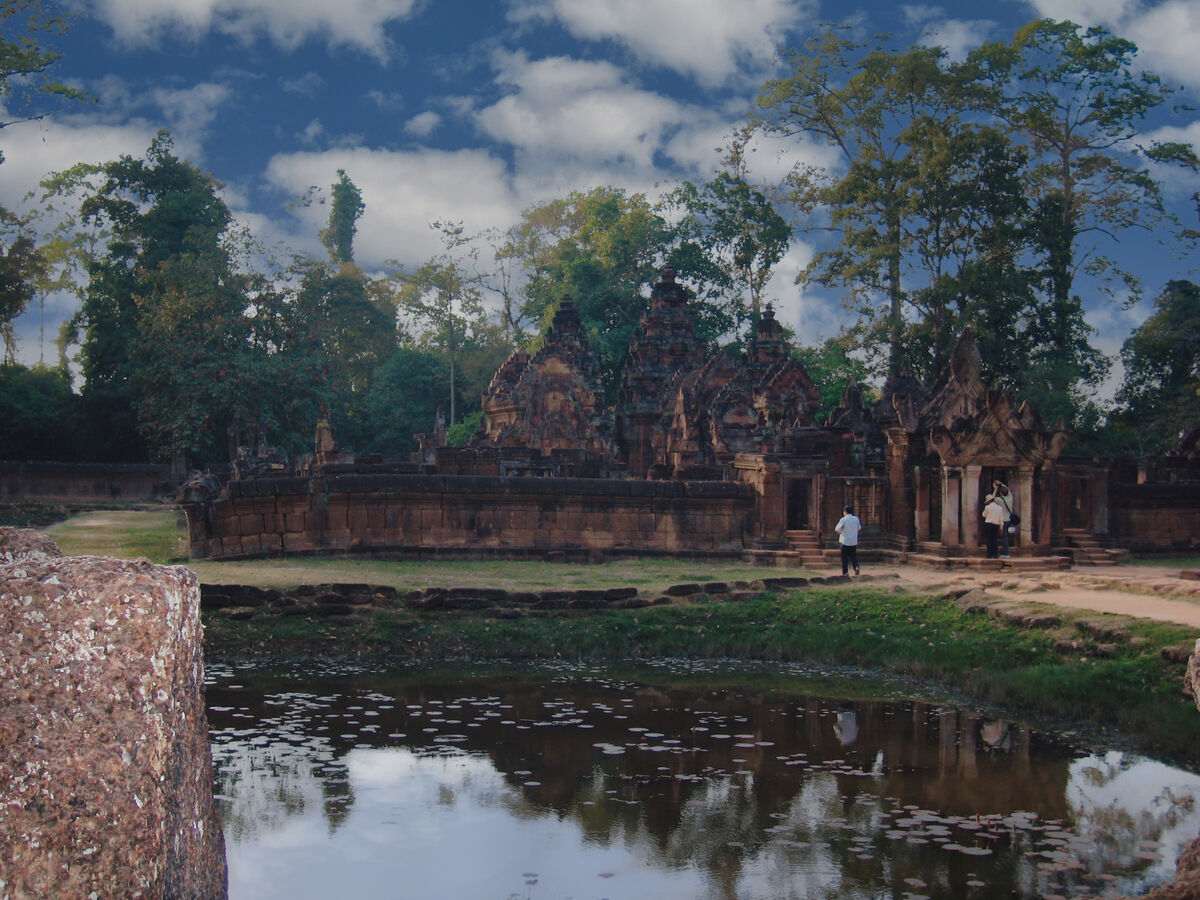
(Download)
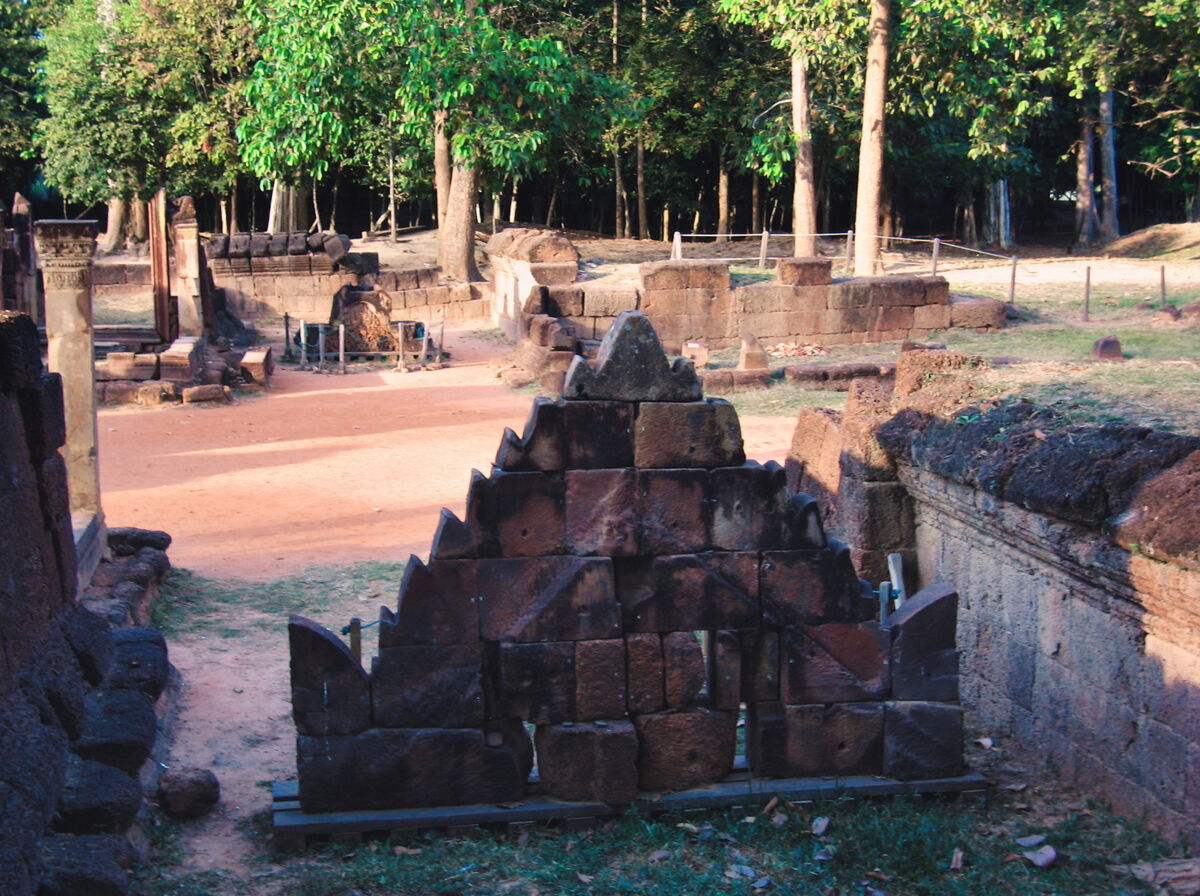
(Download)
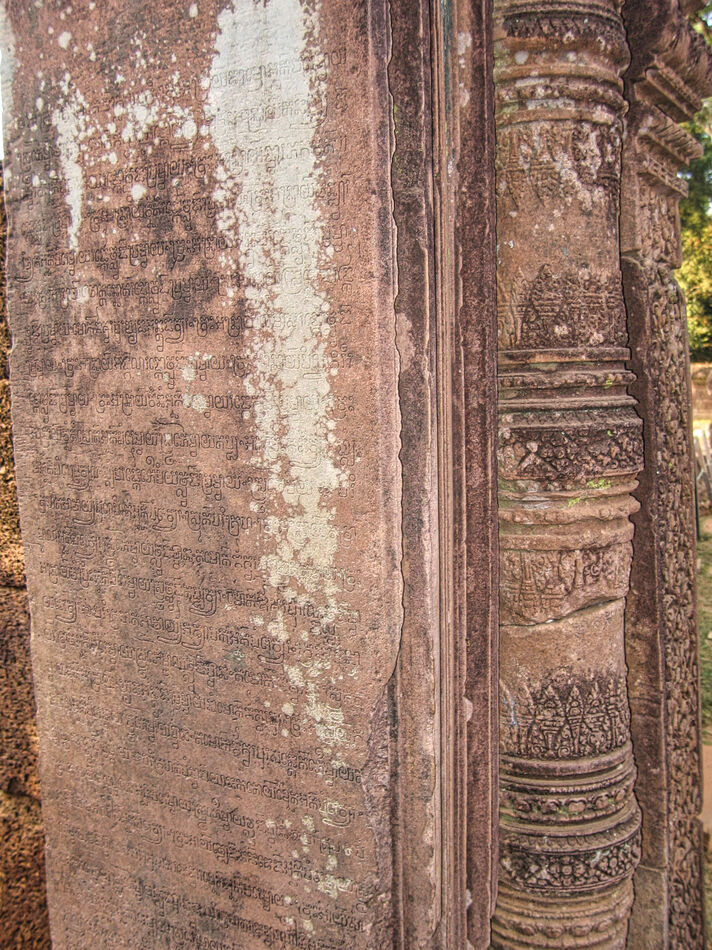
(Download)
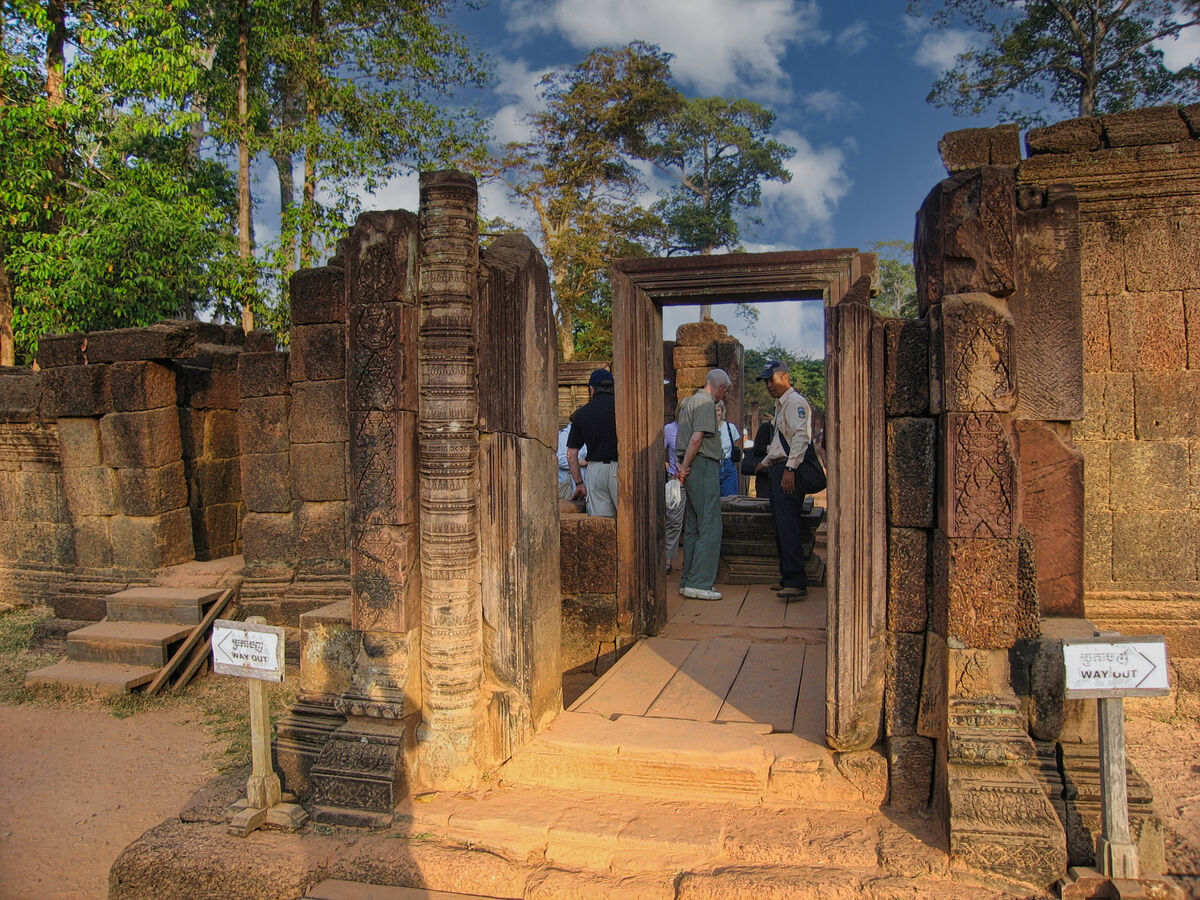
(Download)
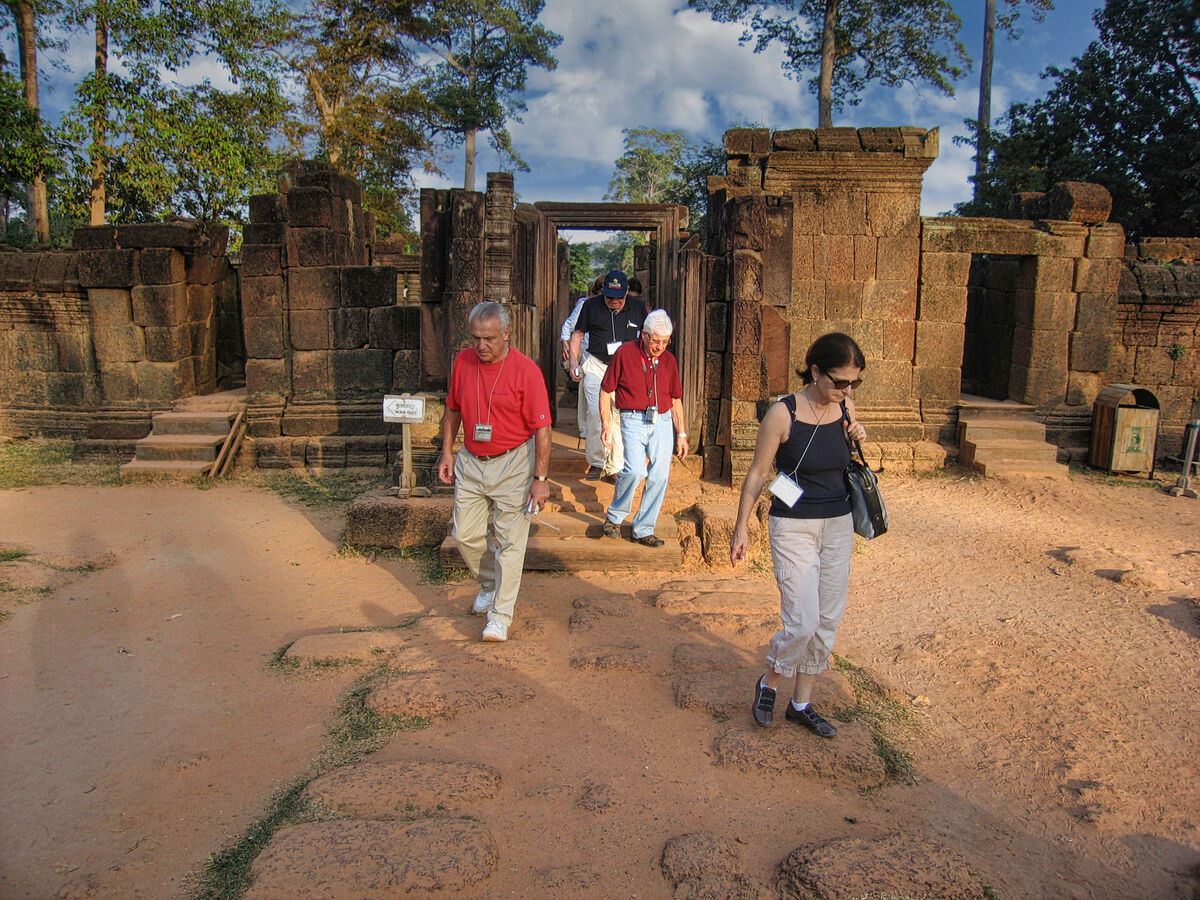
(Download)
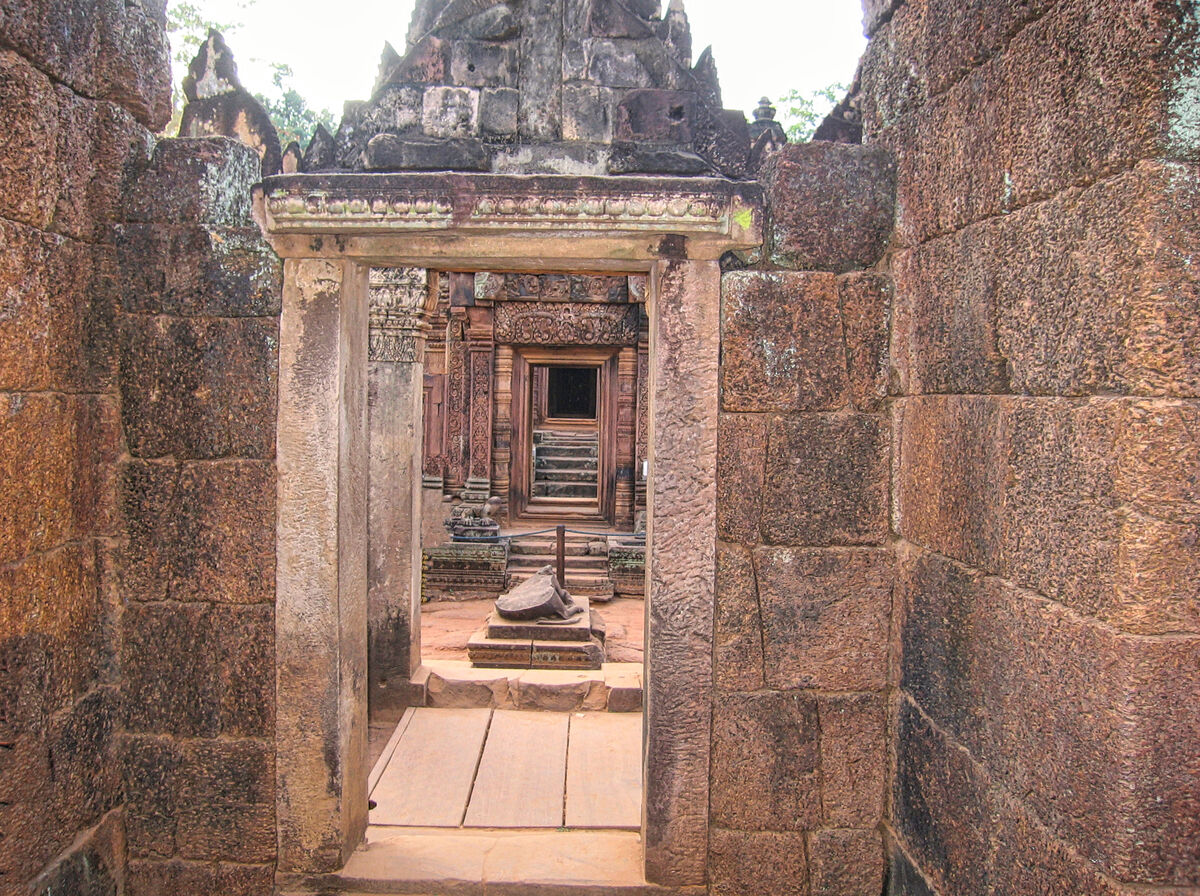
(Download)
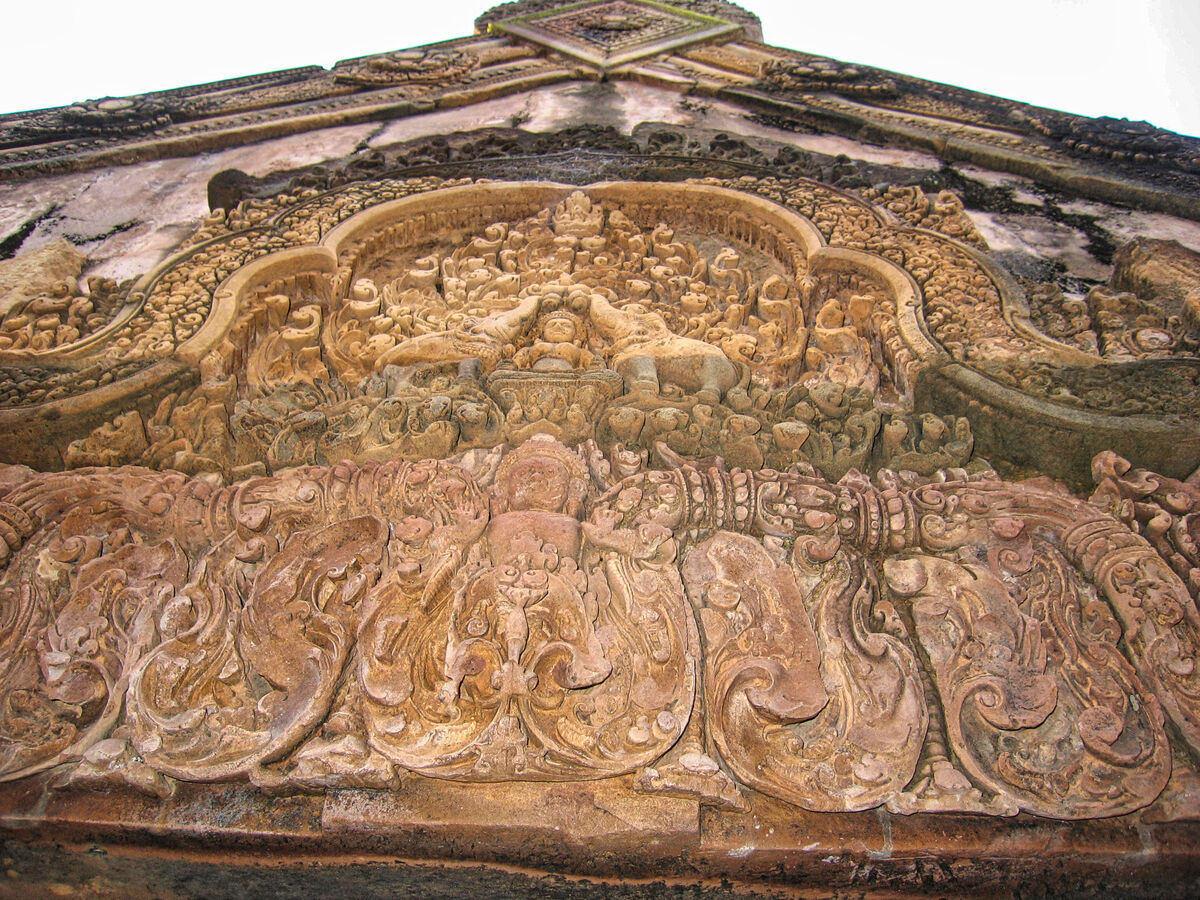
(Download)
Dec 30, 2022 14:55:56 #
Dec 30, 2022 15:20:12 #
Dec 30, 2022 15:21:55 #
Dec 30, 2022 16:27:00 #
Dec 30, 2022 17:03:57 #
Dec 30, 2022 18:04:19 #
Dec 30, 2022 18:05:44 #
NMGal wrote:
Hard to imagine how it survived all those centuries.
True Barbara, especially considering the brutal wars over the centuries. Thanks for commenting.
Dec 30, 2022 19:40:46 #
Dec 30, 2022 19:45:12 #
UTMike wrote:
Beautiful tour, Mark! The penultimate shot is an eye catcher.
Thanks very much Mike. She's an eyecatcher even when not being photographed!
Dec 31, 2022 05:25:33 #
Dec 31, 2022 06:54:40 #
Dec 31, 2022 08:28:51 #
Dec 31, 2022 09:34:07 #
Dec 31, 2022 10:47:10 #
Outstanding, Mark. A little different from your usual post but great nonetheless.
If you want to reply, then register here. Registration is free and your account is created instantly, so you can post right away.

